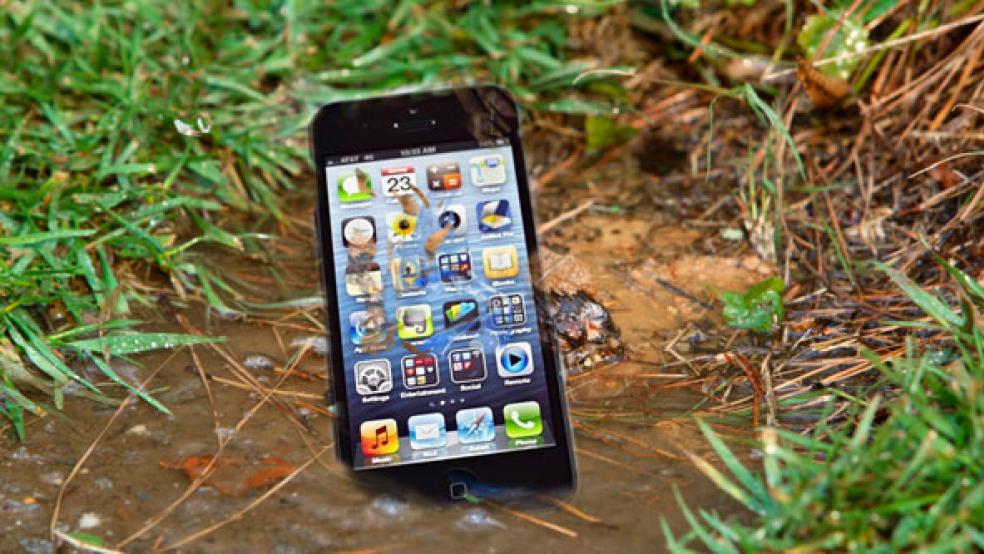Greg Adkins was on a family vacation in Destin, Fla., last month when he experienced an event that 94 percent of Americans worry about: He lost his cell phone.
Adkins was at lunch with his kids when he realized he’d left his iPhone at a go-cart track earlier in the day. “I panicked,” said the marketing executive from Nashville, Tenn. “My phone is my connection to everything. Even on vacation, I was freaking out.”
After calling the phone (it went straight to voicemail) and the go-cart track to see if anyone had turned the device in, Adkins went back to the hotel and booted up his laptop. He had downloaded the “Find my iPhone” app onto his cell phone and was able to use the program to locate his phone via GPS.
Adkins forwarded the information to the local police department, which sent an officer to the location. There, they found a teenage employee of the track who eventually admitted to taking the phone and turned it over to the officer.
“Thirty minutes later, I had the phone back in my hands,” Adkins says. Not everyone, though, is as fortunate.
Only about 50 percent of lost phones make their way back to their owners. Cities across the country are reporting an uptick in cell phone theft: Robberies involving cell phones now comprise 30 percent to 40 percent of robberies in major cities.
Since we use our smartphones for everything from banking to collecting personal photos, losing a phone is also an easy way to become a victim of identity theft. Maybe that’s why a recent survey of travelers found that they thought losing their cell phone would be more stressful than losing their wedding ring.
Take these practical steps to improve your odds of getting your phone back and to protect your data in the case your phone has been stolen.
1. TAKE PRECAUTIONS AHEAD OF TIME
Only a third of smartphone users protect their device by requiring a PIN or password. Pick a random pin, rather than easy-to-remember (and easy-to-hack) numbers like dates or addresses. “People feel like it’s a pain to put in a pin every time they pick up their phone, but it’s a pain that’s well worth enduring,” says Kevin Haley, director of product management for security response at Symantec. “It gives you a big level of protection.”
RELATED: WHY A SMARTPHONE KNOWS IF YOU’RE SICK BEFORE YOU DO
Download a remote finder like “Find my iPhone” or “Where’s my Droid.” These apps use GPS to show you exactly where your phone is located. That will help you find a phone that’s merely been misplaced – and it could also help law enforcement track down a stolen device.
If you’re very concerned about the information stored on your phone, an app like Lookout will give you the ability to remotely delete all data and restore your settings. Make it a habit to regularly back up important contact info and photos on your cell phone. Thirty percent of people use their cell phones to take pictures on their vacation, and those can be impossible to replace if the phone is lost.
2. REPORT THE LOSS IMMEDIATELY
Call your cell provider and have all service – incoming and outgoing calls, texts, and data – suspended. That will ensure a thief doesn’t see new personal messages, and it will prevent him or her from racking up long-distance calls for which you could potentially be billed.
If it’s an office-issued cell phone, or if you use it for work and it contains sensitive information, you’ll need to report it to your IT department as well. Many offices use encryption programs to protect company information and can remotely erase office-issued phones.
Then call the police to report the stolen device. Even if they don’t go after the thief (and in large municipalities, they may not), most states keep a database with the serial numbers of all lost phones. If they come across your cell while investigating another crime, they may return it to you.
3. CHANGE ALL YOUR PASSWORDS
First change the passwords for any financial or banking accounts that you access via your phone; then move on to email and social media accounts. “Most of us leave those apps logged in all the time so we can access them on the go, but that can make you [vulnerable to ID theft] if your phone gets taken,” says Stephen Ebbett, president of gadget insurer Protect Your Bubble.
RELATED: NOKIA VS. BLACKBERRY: A SMARTPHONE BATTLE FOR SURVIVAL
A Symantec study last year found that 60 percent of people who found a cell phone attempted to access the email or social media accounts on the device. If you believe someone has accessed your accounts before you’ve had a chance to change the passwords, consider signing up for credit monitoring to stay abreast of possible future breaches.
4. LOOK INTO LOW-COST REPLACEMENTS
Once you’ve exhausted all options and accepted that you may never see your phone again, get ready for sticker shock when you have replace it. Most wireless carriers subsidize phone purchases when you sign up for a contract, so you can get, for example, the latest iPhone for a few hundred dollars. If your contract is not up for renewal, that same phone will run $650 to $800.
If you’ve got an older model phone, you can usually take that to your carrier, who will activate it with your old number at no charge. Otherwise, you can typically get a refurbished smartphone at about half the price of a new one.


